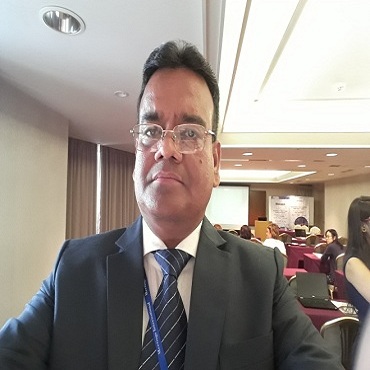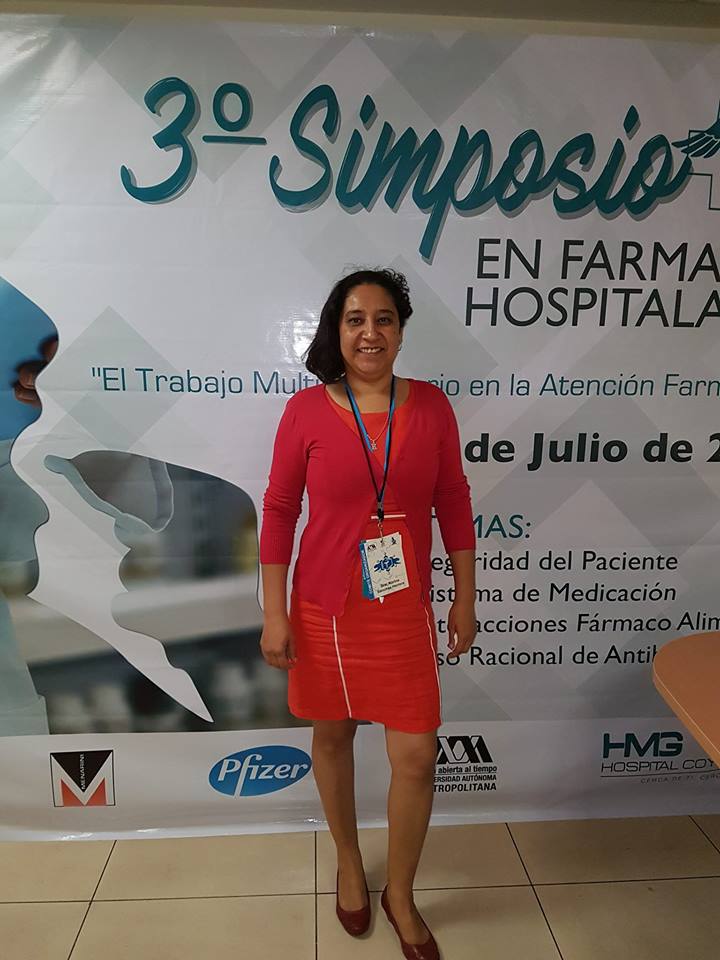Scientific Program
Keynote Session:
Title: Title: Eating disorders and causes, symptoms and treatment possibilities. When are you recovered, and what does recovered really means?
Biography:
Aô€…Œ er she recovered from her own eaô€†Ÿ ng disorder she wrote her fi rst book “When are you fed up?” and Set up ISA POWER in 2013. Her second book “The wolf in sheep’s clothing” off ers an insighô€†ž ul guide for those who want to help their loved one suff ering. Over the course of years ISA Power has earned a Reputaô€†Ÿ on for helping both local and internaô€†Ÿ onal clientele achieve full and lasô€†Ÿ ng recovery from a wide range of eaô€†Ÿ ng disorders, including
Anorexia Nervosa, Bulimia Nervosa, Binge Ea􀆟 ng Disorder and Ed-Nos. The mul􀆟 -disciplinary team includes professional coaches and therapists; NLP coaches, Life coaches, Counselors, die􀆟 cians, PMT therapist, EMDR therapist, psychologist, drama therapist and Hypnotherapists. The coaches have all fully recovered from their ea􀆟 ng disorder. They are the living Proof that recovery is possible. Isabelle Plasmeijer has a personal passion to help people in becoming the best version of themselves.
Abstract:
Statement of the Problem: Anorexia Nervosa is one the far
most deadly psychiatric illnesses there are. About 10%
of all pa􀆟 ents suff ering die because of medical condi􀆟 ons
or because they commit suicide. There are many forms of
ea􀆟 ng disorders. Most know is Anorexia Nervosa, but also
Bulimia, Binge Ea􀆟 ng Disorder and OSFED (Other Specifi ed
Feeding and Ea􀆟 ng Disorders). Although anorexia and
bulimia tend to get the a􀆩 en􀆟 on, OSFED actually makes
up 70 percent of all 24 million ea􀆟 ng disorder diagnoses in
the United States. A person with OSFED may be diagnosed
as such because she does not fully meet the criteria for
anorexia or bulimia. A person with OSFED may have some
symptoms of both disorders, but not severely enough to
warrant a diagnosis. Reason people develop an ea􀆟 ng
disorder can vary from bullying, violence at home, posttrauma
􀆟 c stress disorder (PTSD) and alcohol dependency.
Many researchers have invesô€†Ÿ gated the cause, it’s cure,
treatment op􀆟 ons and a􀅌 ercare. Sadly enough there has
not been found a cure yet. Over the course of 5 years
Isabelle has wri􀆩 en 3 books. The last book she wrote
focusses on the limi􀆟 ng beliefs a person with an ea􀆟 ng
disorder has. It reveals the beliefs, excuses and fears that
people suff er from such as “I am not sick enough to get
help”, “If I recover now, everyone will think I dramaô€†Ÿ zed all
the ô€†Ÿ me”, “I can’t live without my eaô€†Ÿ ng disorder. I need
it to get by”. The main characterisô€†Ÿ cs of people suff ering
from an ea􀆟 ng disorder are that they are; caring, pleasers,
perfec􀆟 onist, insecure, low self-esteem, over achievers. In
therapy Isabelle beliefs helping a person to eat are simply
not enough. Ea􀆟 ng disorders are not about food or ea􀆟 ng.
Title: Underu􀆟 lized food and alimentary technology, a synergic interacion as an approach to a hunger free world
Biography:
Virginia E Melo Ruiz is professor at Autonomous Metropolitan University, Mexico City, Mexico. Her research is focused in underu􀆟 lized food andtechniques for preserva􀆟 on and produc􀆟 on of products from natural sources such as edible insects and plants to reduce alimentary defi ciency and to improve health of people in rural and urban areas. She has about 40 years of experience in the fi eld and has published several papers in the topic.
Abstract:
Hunger, whose origin is not due to just one reason, may
be consider the major health problem in the whole
world where the high increase in popula􀆟 on is one of the
most important reasons of this problem. As a consequence,
many studies have been described regarding alimentary
techniques to increase food availability, and lots of eff orts
have been made to search underu􀆟 lized food from natural
sources (animals and plants). However, there is s􀆟 ll a gap
between the research for new food sources and alimentary
techniques that must complement each other to obtain
the benefi ts needed. An example of this is Escamoles
(seasonal ant eggs) whose were only consumed by people
from rural communi􀆟 es, but due to their high nutri􀆟 onal
value, they were promoted as a good source of nutrients.
The main problem was that Escamoles were available only
for a few months every year (spring season) and for such, it
was necessary to apply produc􀆟 on techniques to increase the amount of Escamoles, then it was necessary to apply
diff erent preserva􀆟 on techniques such as refrigera􀆟 on
or freezing depending on the period of 􀆟 me es􀆟 mated
for their consump􀆟 on. In addi􀆟 on, adequate prepara􀆟 on
techniques were applied in order to keep nutri􀆟 onal
value and sensory characteris􀆟 cs that are essen􀆟 al to be
accepted by consumers. It is worth men􀆟 oning that every
procedure employed did not caused important changes
in nutri􀆟 onal value but increased their shelf life, so this
important source of nutrients can be available all year and
help to improve people´s access to valuable sources of
nutrients that could not be possible without appropriate
produc􀆟 on and preserva􀆟 on techniques. In conclusion,
studies of underu􀆟 lized natural sources of food should be
support by alimentary techniques to provide enough food
and so to approach to a world free of hunger.
Title: Teaching food technology across cultures – Experiences from Australia and Zimbabwe
Biography:
Ester Mpandi Khosa is a re􀆟 red Academician and Research Scien􀆟 st and former Industrialist and School Teacher. She is a Registered Nutri􀆟 onist with the Allied Health Professionals Council (AHPC) of Zimbabwe and with the Nutri􀆟 on Society of Australia (NSA). She now directs and runs a private (family owned) consultancy called Breakthrough Consultants (Pvt.) Ltd., and consults in food, nutri􀆟 on and wellbeing as a nutri􀆟 onist. She is
the current Board Chairperson of the Zimbabwe Energy Regulatory Authority (ZERA). She also serves on two Zimbabwe Universi􀆟 es Councils as an External Member of the Councils.
Abstract:
Title: Milk Vita coopera􀆟 ve dairying: A legendary era in Bangladesh
Biography:
Azad M.A.K is performing as a Smallholding Coopera􀆟 ve Dairy Expert in Milk Vita, Bangladesh contribu􀆟 ng huge IGA ac􀆟 vi􀆟 es through entrepreneurship dev. towards low income genera􀆟 ng mass people na􀆟 on widely . He has completed his B.Sc. A.H (Hons.), MS in Dairy Science Degree from Bangladesh Agricultural University and MBA in Marke􀆟 ng & Interna􀆟 onal Business Degree from Interna􀆟 onal Islamic University Chi􀆩 agong. Previously served in Inter Chain Project Consultant AB Sweden.
Abstract:
Oral Session 1:
- Food Science & Technology | Food Chemistry | Food Safety, Security and Control | Food and Nutri􀆟 on

Chair
Osama O Ibrahim
Bio Innovation, USA
A PHP Error was encountered
Severity: 8192
Message: trim(): Passing null to parameter #1 ($string) of type string is deprecated
Filename: pastconference/past-program-schedule.php
Line Number: 354
Backtrace:
File: /efsdata/meetingsint-com/application/views/pastconference/past-program-schedule.php
Line: 354
Function: trim
File: /efsdata/meetingsint-com/application/controllers/Pastconference.php
Line: 128
Function: view
File: /efsdata/meetingsint-com/index.php
Line: 317
Function: require_once
Title: Alimentary techniques for preservation of Escamoles ant eggs edible insects in Mexico
Biography:
Karina Sanchez Herrera is Coordinator of the Degree at Autonomous Metropolitan University, Mexico City. She has participated as a speaker with more than 50 papers in poster and oral mode in more than 35 congresses at national and internationally level. As a researcher she have published 13 articles of various researches in internationally recognized scientific journals.
Abstract:
A PHP Error was encountered
Severity: 8192
Message: trim(): Passing null to parameter #1 ($string) of type string is deprecated
Filename: pastconference/past-program-schedule.php
Line Number: 354
Backtrace:
File: /efsdata/meetingsint-com/application/views/pastconference/past-program-schedule.php
Line: 354
Function: trim
File: /efsdata/meetingsint-com/application/controllers/Pastconference.php
Line: 128
Function: view
File: /efsdata/meetingsint-com/index.php
Line: 317
Function: require_once
Title: Title: The impact way of cooking on the content of bioactive ingredients in rose hip tea
Biography:
Zilha Asimovic is working as full professor for biochemistry in agriculture and food technology, at University of Sarajevo, Faculty of Agriculture and Food Sciences, Bosnia and Herzegovina. Her PhD was in biochemistry of domestic animals (sheep), and she is master of Chemistry Sciences. She finished Faculty of Science (Chemistry department). She was a member of Commissions a few doctoral thesis and over than 20 master thesis (as mentor). She is an author of many publications and three university textbooks in field of biochemistry. Her research interests: biochemistry, metabolism of trace elements, biochemistry of food, bioactive compounds in food, phenolic compounds in food, enzymes in food, vitamin analysis in food, storage and handling of food.
Abstract:
The rose hip belongs to the species of roses (family Rosaceae), and it is one of the most popular plants that is used as food and in medicinal purposes. This plant is known by many names, such as wild rose, dog rose, sweet briar and etc. The berries of the rose hip are rich in contents of vitamins, such as vitamins B1, B2, B3, D, pro-vitamine A, and in a wide range of other nutrients. The rose hip is especially rich in vitamin C content. The aim of this work was to determine total phenol and flavonoid content and anti-oxidative activity of rose hip tea (in bulk and filter bags) in dependence of way of cooking (cooking, microwave treatment and cooking on the water bath (with reflux). Determination of phenol, flavonoid and anti-oxidative activity was done by cooking (90°C, 15 min) and cooking in water bath with reflux, and microwave treatment.
The total phenols were determined with the Folin-Ciocalte reagent, an antioxidant activity with pFRAP and gallic acid (GAE) was used as standard. For flavonoid determination, method with AlCl3 making complex, and catechin (CE) was used. For statistical analysis two factor ANOVA was conducted. The highest phenols content was found in filter bags by microwave treatment (456.45 mg GAE/100g dw). The lowest phenols content was recorded with using cook (228.27 mg GAE). For flavonoid max was found in bulk using microwave, and min was in filter bags of tea (9.91 mg CE/100g dw) by cook. The max antioxidant activity was recorded in bulk where coked and min activity in filter bags 36.99 mg GAE /100g dw with using water bath. After statistical analysis, it was concluded that an alternative hypothesis is accepted and average total phenols, flavonoids and antioxidant activity was statistically different in relation to way of cooking at level 95%.
A PHP Error was encountered
Severity: 8192
Message: trim(): Passing null to parameter #1 ($string) of type string is deprecated
Filename: pastconference/past-program-schedule.php
Line Number: 354
Backtrace:
File: /efsdata/meetingsint-com/application/views/pastconference/past-program-schedule.php
Line: 354
Function: trim
File: /efsdata/meetingsint-com/application/controllers/Pastconference.php
Line: 128
Function: view
File: /efsdata/meetingsint-com/index.php
Line: 317
Function: require_once
Title: Title: Quality improvement of thai fresh rice noodle restructured with starch digested enzyme and resistant rice starch type III
Biography:
Jirapa Pongjanta has completed her Master degree at the age of 28 years from University Putra Malaysia from the Faculty of Biomedical and Health Science (Nutrion and Community Health) and Ph.D on Food Nutrition from Kasetsart University, Thailand in 2010. She is Assistant Professor within the feild of Food Science and Technology. Her has published about 50 papers in reputed journals and conference proceeding. Her also has been serving as an bind reviewer of academic journal.
Abstract:
The effect of immobilized cells with annealing modification of gross michale green banana flour (AMGMGBF) on physicochemical and microbiological properties of synbiotic powder and to investigate the survival of cells under simulated gastrointestinal conditions. Probiotic Lactobacillus acidophilus TISTR 1338 were used while AMGMGBF were used as prebiotic and immobilization support. Immobilization of cells with AMGMGBF was prepared by added of 5, 10, 15 and 20% of AMGMGBF in suspension cells culture with 0.98% sodium alginate in sterized of 0.85% sodium choride solotion (w/v) and than mixed well to soft foam prior freeze dried for 8 hrs and grinded pass through 80 mesh screen before package in chitosan capsule and aluminium foil. The symbiotic banana powder samples were storage at 5oC for 10, 20, 30, 40, 50 and 60 days prior analysis on morphological image, viable cell of number L. acidophilus and surviver in simulated gastric and intestinal juices. The results revealed that the capsule synbiotic added with 5, 10, 15 and 20% of AMGMGB was significant higher in the viability of immobilized cells (p<0.05) than the aluminium foil packaged. While, the both storage time was not significant (p>0.05) on the viability of immobilized cells. Moreover, the L. acidophilus viable cell number was maintained 8.60 and 8.47 log CFU g⻹ of 10 and 15% of AMGMGBF, respectively. The level of AMGMGBF in synbiotic powder did not significantly influenced on the survival of probiotic cultures (p>0.05) with survived when exposed to simulated gastric and intestinal juices.
A PHP Error was encountered
Severity: 8192
Message: trim(): Passing null to parameter #1 ($string) of type string is deprecated
Filename: pastconference/past-program-schedule.php
Line Number: 354
Backtrace:
File: /efsdata/meetingsint-com/application/views/pastconference/past-program-schedule.php
Line: 354
Function: trim
File: /efsdata/meetingsint-com/application/controllers/Pastconference.php
Line: 128
Function: view
File: /efsdata/meetingsint-com/index.php
Line: 317
Function: require_once
Title: Nutritional profi le of some selected pulses of sindh pakistan
Biography:
Aijaz Hussain Soomro has completed his PhD from University of Arid Agriculture Rawalpindi, Pakistan and post-doctorate from the University of Queensland, Australia. He is the director of the Institute of Food Sciences and Technology Sindh Agriculture University Tandojam, Pakistan. Recently, He has organized 3rd International Conference on Agriculture, Food and Animal Sciences ICAFAS 2017 as organizing secretary. He is an elected member Executive Council, SUN Academia and Research Network, Pakistan. He has published more than 70 peer reviewed papers in reputed journals and has been serving as an editorial board member of EC Nutrition.
Abstract:
Statement of the Problem: Pulses are one of healthiest foods due to its nutritional properties and protein quality which is strongly influenced by its amino acids composition. The pulses which are underutilized have tremendous potential for commercial exploitation and their frequent consumption has been associated with lower risk of cardiovascular and coronary heart diseases. Therefore, this study was carried out to evaluate the nutritional profile of selected pulses at Institute of Food Sciences and Technology, Sindh Agriculture University Tandojam. Methodology: Different pulses such as chickpea white, chickpea brown, split chickpea; red lentil, yellow lentil, white lentil, red kidney bean and black eyed bean were analyzed for the proximate composition, fat soluble vitamins (A, E & β-carotene) and amino acid profile. Findings: The results of proximate analysis showed that these pulses contains high protein content ranged from 18.11% to 23.79%, ash content ranged from 2.33% to 3.90%, pulses has very low lipid content ranged from 0.74% to 4.84%, but pulses are high in carbohydrate ranged from 59.75% to 65.75%. Due to low fat content, fat soluble vitamins also lack in pulses, vitamin A was not found in all the samples, vitamin E was present in chickpea white, chickpea brown and split chickpea in a very minute quantity of 1.86, 1.56 and 0.65 mg/100g, respectively, β-carotene precursor of vitamin A was found in all samples ranged from 0.083 to 0.545 mg/100g. The amino acids include essential amino acids leucine found in chickpea white 3.40g/100g and lysine 4.29g/100g in kidney bean. Non-essential amino acids aspartic and glutamic acid was higher in black eyed bean 2.667 and 5.168 g/100g, respectively, while the arginine was found 4.330 g/100g in white lentil. Sulphur containing amino acid cysteine found in excellent quantity in yellow lentil 8.427 g/100 and in black eyed bean 4.543 g/100g. Conclusion & Significance: It is concluded that, pulses are excellent protein sources and could be used to decrease the protein deficiency prevailing in the country.
A PHP Error was encountered
Severity: 8192
Message: trim(): Passing null to parameter #1 ($string) of type string is deprecated
Filename: pastconference/past-program-schedule.php
Line Number: 354
Backtrace:
File: /efsdata/meetingsint-com/application/views/pastconference/past-program-schedule.php
Line: 354
Function: trim
File: /efsdata/meetingsint-com/application/controllers/Pastconference.php
Line: 128
Function: view
File: /efsdata/meetingsint-com/index.php
Line: 317
Function: require_once
Title: Prebiotics/Probiotics interaction for colon health
Biography:
Osama Ibrahim is a highly experienced, principal research scientist with particular expertise in the field of microbiology, molecular biology, food safety, and bio-processing for both pharmaceutical and food ingredients. He is knowledgeable in microbial screening /culture improvement; molecular biology and fermentation research for antibiotics, enzymes, therapeutic proteins, organic acids, food flavors, biochemistry for metabolic pathways and enzymes kinetics, enzymes immobilization, bio-conversion, and analytical biochemistry. He was external research liaison for Kraft Foods with Universities for research projects related to molecular biology and microbial screening and holds three bioprocessing patents. In January 2005, he accepted an early retirement offer from Kraft Foods and in the same year he formed his own biotechnology company providing technical and marketing consultation for new start up biotechnology and food companies.
Abstract:
Prebiotics are the fermentable, non-digestible carbohydrates that stimulate the activity of beneficial bacteria (probiotics) in the digestive system. There are two prebiotics categories: Prebiotics fibers that are naturally occurred in whole grain, broccoli, asparagus, radish, cabbage, and others. and Prebiotics oligosaccharides such as Fracto-oligosaccharide (FOX), Galacto-oligosaccharides (GOS), Xylo-oligisaccharides (XOS), polydextrine , and others. These prebiotics oligosaccharides are added to foods for their health benefits and are labeled as food additives in the United States. These Prebiotics oligosaccharides are manufactured in pure forms enzymatically or extracted from plants. Probiotics are the beneficial bacteria in the colon such as Befidobacteria and lactic acid bacteria. These probiotics bacteria assist in the maintenance of the natural balance of micro flora and reduce the effect of harmful and pathogenic bacteria in the digestive system, suggesting that these probiotics bacteria can prevent gastrointestinal tract from infection diseases and reduce colon inflammation. It is also, assumed that probiotics bacteria strengthen the immune system. Synbiotics are products that contain both prebiotics and probiotics. These symbiotic products have both non-digestible carbohydrates (prebiotics) and the good bacteria (probiotics). The impact of synbiotics on colon health will be highlighted in this presentation.










